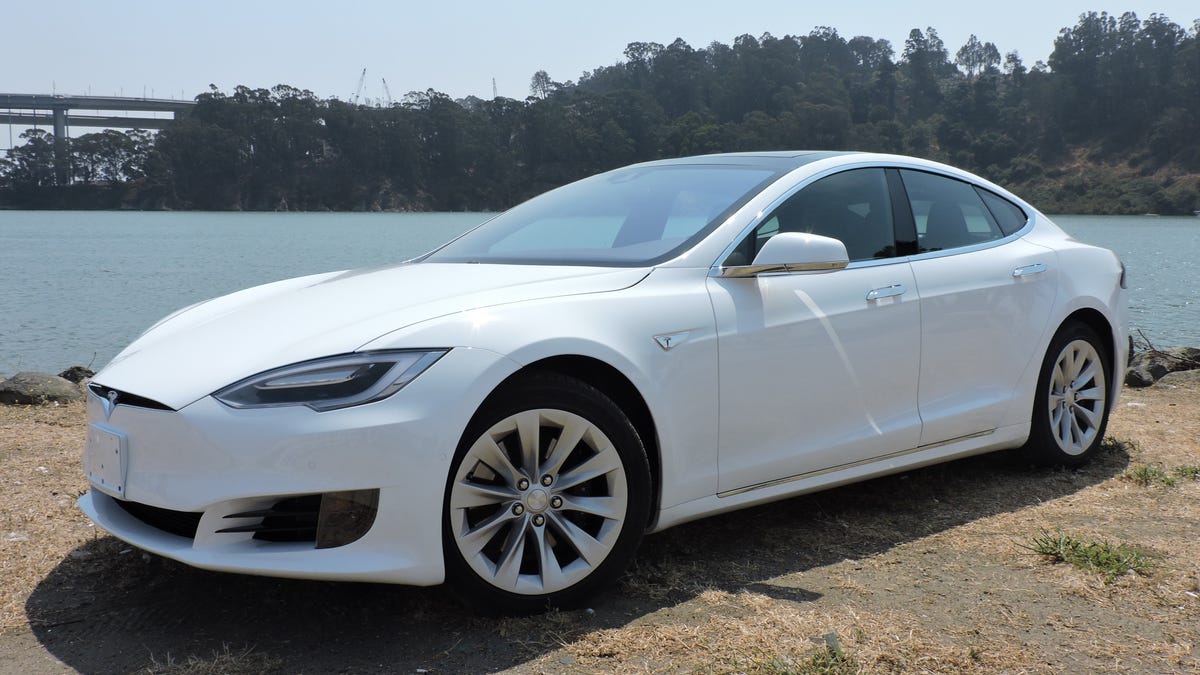Tesla Model S battery reignited twice after crash, NTSB reports
But it's not something you should be freaking out about.

According to a new report from federal investigators, a Tesla battery caught fire twice after it was involved in a crash. But given the volatile nature of lithium-ion batteries, perhaps it shouldn't have come as a surprise.
The National Transportation Safety Board (NTSB) today released a preliminary report regarding a Tesla Model S that crashed in Florida, killing two and injuring one. The report states that, after extinguishing a fire that consumed the vehicle, the battery again caught fire while being loaded for removal from the scene. The battery caught fire again when it arrived at the storage yard. Both times, the fire was extinguished.
This isn't the first time that a Tesla battery has reignited following a collision. It also happened following a Tesla Model X crash earlier this year in California, which is still under NTSB investigation as well. While that might stoke fear in those not familiar with EVs, reignition isn't only feasible, it's something that needs to be monitored by all parties involved.
The delicate dance: Lithium-ion batteries and heat
Lithium-ion fires can happen for a variety of reasons, but most boil down to heat. EV batteries contain thousands of individual cells, and if even one is punctured, the lithium inside will react violently with water in the air, generating lots of heat and occasionally a fire. If you've ever seen a YouTube video of someone stabbing a phone battery, that's what's happening -- air gets in, reacts with lithium and starts a fire.
That's why batteries contain safeguards to prevent thermal runaway -- swollen batteries are the battery pack doing its best to keep those elements from being exposed to air, even if the battery has already failed but not yet ignited.
The charging and discharging cycles of lithium-ion batteries also generate heat, which is why EV batteries have some serious cooling systems attached -- again, to prevent that heat from creating bigger, fiery-er issues. It's a delicate dance between charging, discharging and mitigating the heat that's produced.
Why this shouldn't stoke anti-EV sentiments
That brings us back to Tesla's battery. Per the Model S emergency response guide, Tesla suggests that responders "consider allowing the battery to burn while protecting exposures." Letting the fire consume the entire battery means all that lithium reacts and eventually stops burning.
But if a fire department arrives and douses the battery to where the fire appears to stop, it might not have fully stopped. Tesla's batteries contain numerous firewalls to slow down the spread of fire and (hopefully) allow people to get as far away as possible, as quickly as possible. But those firewalls also have the side effect of making a fire appear done when it might not be.
It's possible that the fire department or the tow truck operator responsible for hauling it away didn't check for continued exothermic reaction in the battery with a thermal imaging camera -- something Tesla explicitly recommends doing post-fire -- so the heat continued to build in the battery until a set of non-burnt cells popped off and caught fire. And that's likely what happened when the fire ignited once again at the storage yard. The NTSB report doesn't say what safeguards the fire department and tow truck operator implemented following the initial fire that resulted from the crash.
Always treat a gun as if it's loaded, even if it's not; always treat a damaged lithium-ion battery as an immediate fire hazard, even if the fire is seemingly out.
Follow-up fires: Not the first time
The federal government has experience in lithium-ion battery fires, too. After crash testing the then-new Chevrolet Volt in 2011, the National Highway Traffic Safety Administration found that the Volt it tested had caught fire well after the fact. It had similar issues in subsequent lab tests meant to replicate the original conditions.
Eventually, the case was closed. It turns out that the Volt's battery caught fire because the NHTSA's side-into-pole crash test compromised the battery, which was not discharged even though GM's emergency response policy suggested discharging the battery after an accident. The affected battery pack was then subjected to rollover tests, which caused coolant to leak from a burst line. Later, when the crashed Volt was stored outside, the coolant crystallized, causing the short that started the fire.
It just goes to show that no matter how controlled an environment might be, these batteries that are in everything from our phones to our cars should be treated with the utmost care.
Tesla Model 3 Long Range: Tesla's long-awaited Model 3 is here, but how does it actually drive?
"Unboxing" my Model 3: CNET's own Ashley Esqueda documents her experience picking up her new car.

